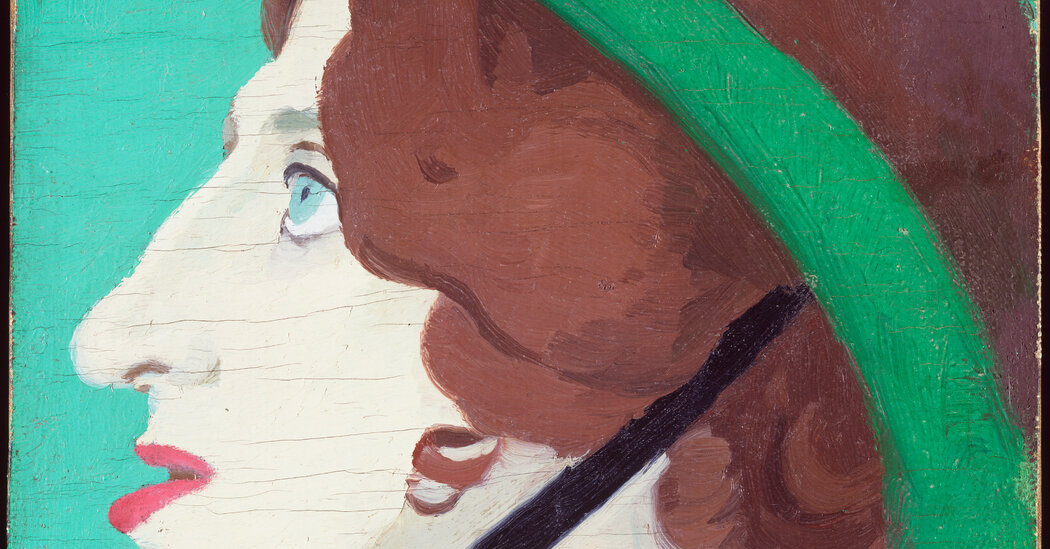Every few years, a new cultural product — book, film, TV show, opera, ballet — emerges about the Bloomsbury Group, the early-20th century affiliation of artists, writers and thinkers that got its name from the central London neighborhood known for its garden squares.
In a 1973 essay in The New York Review of Books, Elizabeth Hardwick lamented the overexposure of its most prominent members — the “exhaustion” of Virginia Woolf and “the draining” of the writer Lytton Strachey. “The period, the letters, the houses, the love affairs, the bloodlines,” she writes, “are private anecdotes one is happy to meet once or twice, but not again and again.”
Decades later, the Bloomsbury industrial complex is still churning away. For every invigorating new angle, as in Francesca Wade’s 2020 psychogeographic group biography, “Square Haunting,” it seems like there is an anodyne TV show with a fashionable cast tumbling in and out of each other’s beds, like the 2015 BBC series, “Life in Squares.” Where the choreographer Wayne McGregor’s 2015 ballet trilogy “Woolf Works” entrancingly adapted the writer’s narratives (“Mrs. Dalloway,” “Orlando,” “The Waves”) to an epic score by Max Richter, “Vita & Virginia” a 2019 biopic about Woolf and her lover, Vita Sackville-West, was a stilted and bloodless account of a famously passionate affair.
This season brings something that focuses on the group’s modish surface to reveal the complexities beneath. The exhibition “Bring No Clothes,” running through Jan. 7, 2024, examines “the philosophy of fashion” underpinning, so to speak, the vestiary impulses of six of the set’s key figures. Curated by the fashion journalist Charlie Porter, who also turned his research into a book of the same name, it brings together artworks, artifacts, textiles and garments with work by contemporary designers influenced by the group’s legacy.
The show takes place at Charleston in Lewes, an exhibition space about 50 miles from London that is an offshoot of Charleston, a country home where the group retreated during World War I. The house itself is known for its walled garden and elaborately decorated interior, where seemingly every surface is painted with idiosyncratic patterns and imagery in chalky, pastel hues.
In the exhibition’s first room, a 7-by-7 grid of black-and-white photographs tacked to the wall reacquaints us with some of the group’s members. Woolf in the loose, drop-waist silhouette she favored after escaping the Edwardian corsetry of her youth. Her sister, the painter Vanessa Bell, in an intricate homemade dress of asymmetrical patchwork fabrics that wouldn’t be out of place today on a Comme des Garçons catwalk. The painter Duncan Grant, Bell’s lifelong companion with whom she painted Charleston’s interiors, in various states of dishabille. The writer E.M. Forster in conservatively tailored three-piece suits, uniforms of conformity that masked his clandestine love for men. The economist John Maynard Keynes, who made long lists of the men he slept with, likewise suited but rakish and unabashed, thrusting his hips forward. The society hostess Lady Ottoline Morrell, her six-foot frame draped in flowing white fabric.
The show, which is sponsored by Dior, features Grant-inspired looks from a recent men’s wear show by the house’s artistic director, Kim Jones. These include a sheer vest embroidered with kissing figures based on a fan Grant painted, and a reflective technical zip-up jacket printed with the artist’s camouflage-esque “lilypond” design that decorates tables and screens at Charleston. Rei Kawakubo’s fantastical costumes for a 2019 opera based on Woolf’s gender-bending, era-spanning “Orlando,” are also on display, but Porter’s show is as interested in the unfashionable as in the fashionable.
To Porter’s eye, all clothes — conventional, disobedient, high, low — are of sociological value: “If a human wears clothes, those clothes are interesting,” he writes in his book; “our concern should not be to judge or rate someone’s clothes, but to see what their clothes can say.”
Woolf wrapped herself in loose knitwear and wrote about how society restricted women through their dress, as we hear in recorded passages from her diaries and “Mrs. Dalloway.” Bell made her own clothes, fixing them ad hoc with safety pins and swathing her head in bright veils, as seen in a 1917 portrait by Grant. Scraps of fabric and a rag rug from Charleston show the household’s interest in unpretentious, recycled materials. A large selection of paintings by Grant feature portraits of male friends — including Foster and Keynes, both paramours — in subtly erotic costume.
Bell’s clothes were burned after her death, but a selection of Morell’s finery is on display for the first time. Her bespoke dresses conceal crunchy, sweat-stained pads that line the armpits. In the pockets of her extravagantly ballooned jodhpurs, Porter found grass seeds and unsmoked cigarettes.
Woolf wrote in her diary that she was interested in what she called “frock consciousness”: how clothes offer choices about selfhood even for the “badly dressed,” as she described herself. “Bring no clothes” was a phrase she and Bell wrote to imminent houseguests arriving at Charleston, meaning, “Wear what you want, we reject convention.” Each character in the exhibition proposes a version of self-definition against the grain.
Sartorial rebellion may seem milquetoast for a generation that witnessed public activism about suffrage, abolition and colonial home rule. The Bloomsbury set has been criticized for practicing affordable transgression, as members of a rentier class that lived with inherited wealth and household staff. (“I do not wonder that people commit suicide, or even murder,” Grace Higgens, a servant at Charleston for over 50 years, wrote in her diary of her work’s daily monotony.) But private-scale interventions can be what’s manageable when you face imprisonment or social exile for your love life.
In his book, Porter says that fashion is inextricably connected to the wider world — commerce, labor exploitation, environmental degradation. Perhaps taking up the Bloomsbury mantle in 2023 means defining oneself in opposition to these things, too.
Stop buying clothes, make your own, purchase vintage, alter as you wish, embrace the slow-fashion approach of building a wardrobe over time. At around $100 a yard, the gift shop sells bolts of a patterned fabric that Bell designed — but it’s exciting to take a page from the Bloomsbury Group itself and design your own. If you lack the inclination, throw on any old thing. Ask yourself what you really want to wear, and why, and then dress or undress for yourself.


